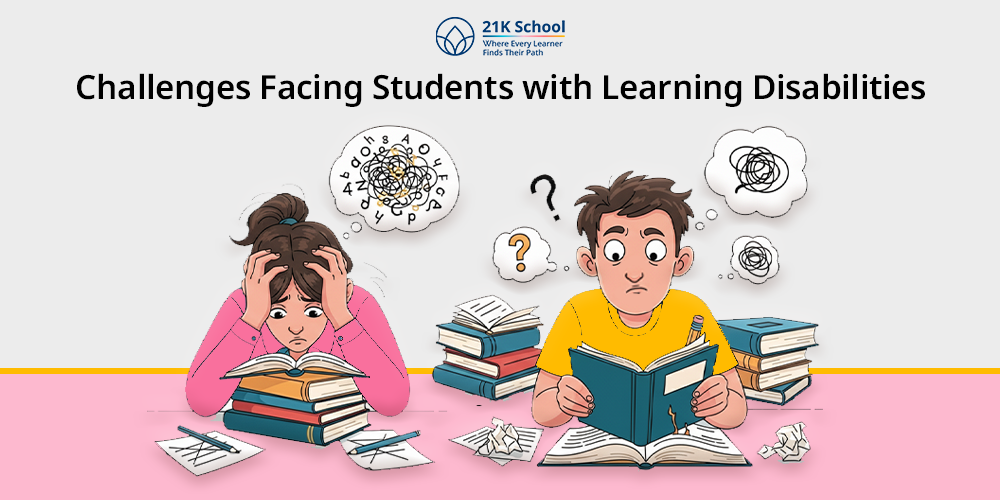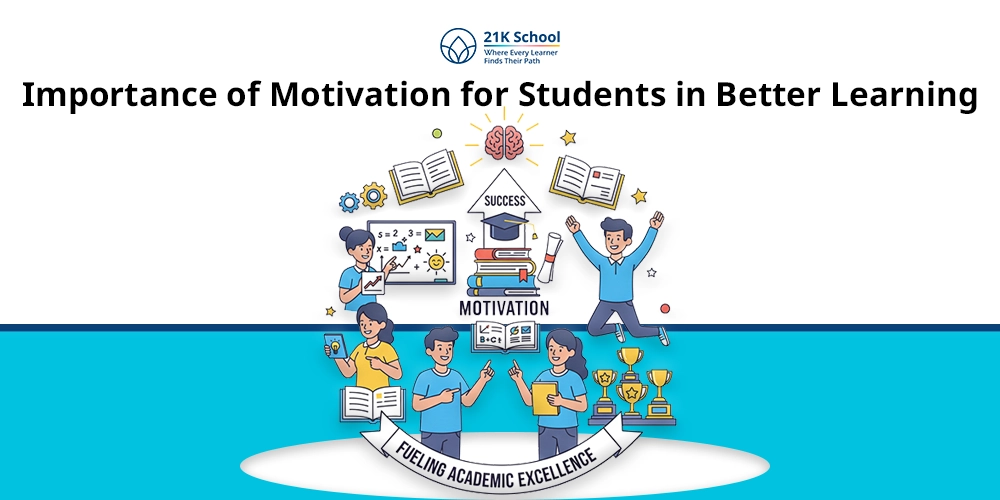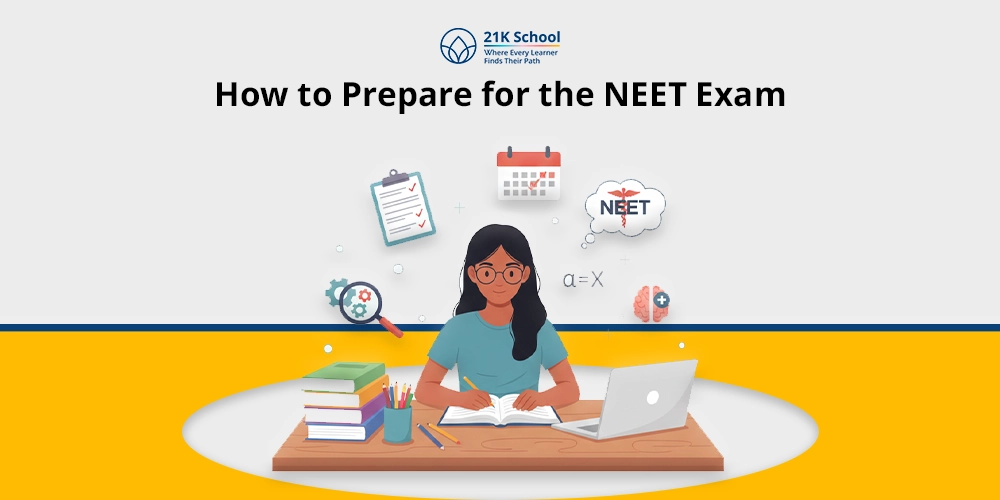
Education is also said to be the biggest equalizer because it gives every student irrespective of his/her background or abilities the means to live a successful life.
But in the case of students having learning disabilities the old system of education may pose numerous challenges.
Though schools can provide the assistants to facilitate education to children with special needs, an inadequacy of the finances, trained specialist and proper learning conditions has remained as a major challenge.
Although teacher actions are positive in many situations, lots of learners with learning disabilities are unable to provide what they are capable of and this may lead to far-reaching consequences on their education and social growth.
Table of Contents
- What are Learning Disabilities?
- 5 Types of Learning Disabilities
- 9 Challenges Facing Students with Learning Disabilities
- 1. Insufficient Funding
- 2. Inaccessible Conditions
- 3. Lack of Individualization
- 4. Problematic Communication with the Peers
- 5. Deficiency of Specialists
- 6. Spelling, Writing, Reading, and Mathematical Difficulties
- 7. Lack of Self-confidence and Self-esteem
- 8. Weak Socialization Skills
- 9. Inability to Organize Work and Time Management
- 7 Solutions for Challenges Facing Students with Learning Disabilities
- Conclusion
What are Learning Disabilities?
A neurological condition or problem that affects the brain of an individual which creates a challenge to process information comes under learning disability.
This impacts on a person’s specific skills like reading, writing and understanding.
Learning disabilities doesn’t mean that individuals have low IQ or intelligence but they experience various challenges in their professional and personal life.
Let’s understand different kinds of learning disabilities to understand briefly.
5 Types of Learning Disabilities
There are various types of learning disabilities but they are basically categorized into few units based on the affected learning part.
Here’s an elaboration:
1. Dyslexia
It is one of the common types of reading disorder individuals face where unable to read a word spelling mistakes and sentence creation is slow.
They have trouble understanding what the facilitator is writing on the board or explaining from the textbook.
2. Dyscalculia
Here, learners are unable to write or organise math related content like arithmetic, mathematical concepts, and numbers.
The common problem they face includes illegible handwriting, inconsistent spacing, difficulty expressing ideas in writing.
3. Dysgraphia
This kind of disorder comes with challenges like difficulty with writing like physical writing, writing process, and writing speed.
Learners get problems in working on maths problems, calculations like arithmetic, probability etc.
4. Visual Processing Disorder
As the name suggests, VPD is unable to understand presentation or data.
While it is not classified under a standard learning disability, it is not related to eye or vision, however the brain has trouble interpreting visuals.
5. Nonverbal Learning Disabilities (NVLD)
It is a learning disorder in which learners feel challenged in nonverbal information, despite strong verbal skills.
Some common problems such as difficulty in understanding body language, visual coordination etc. However, these form of disabilities are not universally recognized yet.
9 Challenges Facing Students with Learning Disabilities
1. Insufficient Funding
Insufficient funding issues can be a major challenge for special needs students. Schools have limited budgets which in most cases mean the students with more needs get less support.
Special education programs are, especially those intended to serve students with learning disabilities, expensive since they need special teachers, resources, and materials.
Also explore various types of special education for classroom learning.
These programs can run poorly funded with resultant staff shortage or unavailable services and this places the students at a great disadvantage.
2. Inaccessible Conditions
A lot of learning settings do not consider accessibility. Sometimes the classroom setting and environment is not designed to handle special needs students.
Some common examples such as individuals dealing with dyslexia require text to speech software for better understanding.
While learners who have visual challenges need additional support to learn properly.
3. Lack of Individualization
These kinds of students are unable to match the regular educational system proposed by schools. Students with disabilities require a customized or different curriculum to learn effectively.
However the majority of schools are unable to meet this facility which leads to learning difficulty and poor academic grades. Special needs students also feel distinct in classrooms.
4. Problematic Communication with the Peers
Social interaction and connection with peers can be a challenge for special needs students.
Communication can be a problem, either verbally, in social interaction and in group discussion with many students who have such conditions.
Sometimes they are also bullied or mentally tortured by other students which adversely impact their learning. It’s important to provide them with a positive learning environment to grow.
5. Deficiency of Specialists
Lack of trained facilitators or limited facilitators for school can negatively impact the education of students with disabilities.
Due to less highly qualified facilitators for students with disabilities leads to reduced time per student and they may not be able to have their individual needs fully met.
In addition, general education teachers do not always have access to special training to work with these students.
Consequently, students with learning disabilities might not be able to fully benefit in terms of expert level teaching, their learning needs might not be met.
6. Spelling, Writing, Reading, and Mathematical Difficulties
The noticeable problems of students with learning disabilities covers inability to perform the basic academic skills of reading, writing, spelling, and math.
These kinds of challenges not only create difficulties for learners but also for facilitators in school. For example, learners with dyslexia are unable to compete with non-disabled students in the classroom.
However, teachers can help students with learning disabilities by providing extra support while learning.
7. Lack of Self-confidence and Self-esteem
The learning disabled students tend to have emotional difficulties especially with regard to self-esteem.
Underperformance in school and particularly the high graded- and standardized test-driven school system may leave these students with a sense of inadequacy or inferiority to their peers.
This can kill their confidence and can result in some problems such as anxiety or depression.
When such students do not receive the needed support and encouragement they may start building those struggles into their psyche, which subsequently may severely impact their long-term motivation and learning.
8. Weak Socialization Skills
Learning disabilities are a relief as the students may have problems with socialization. Such students might tend to lag behind when it comes to social cues, befriending as well as group activities.
Due to weak socialisation skills students with disabilities feel lonely and become unhappy specially in locations like school playground or any gatherings.
9. Inability to Organize Work and Time Management
Special needs students get challenges to organise work and time management in their academic or professional journey.
In various tasks such as homework, project work or science experiments, lack of organising and time management skills make it hard to tackle and complete the assignment on time.
Go through effective approaches like project based learning for students with special needs for learning improvements.
7 Solutions for Challenges Facing Students with Learning Disabilities
The above mentioned challenges can be resolved by implementation of effective solution which is beneficial to create flexible learning environment:
1. Greater Resources/Funding
Allocation of funding or resources help schools to arrange special equipment and other requirements like more teachers leads to effective learning.
2. Open Classrooms
Schools need to provide the benefits of inclusive education in inclusive classrooms which help special needs students access materials, audiobooks, and special programs to perform in a better way.
Understand why inclusive education for children with special needs play a crucial role in learners’ academic progress.
3. Individualized Education Plans (IEPs)
Personalised learning can be an effective solution for students with disabilities in which facilitators use unique teaching methods to guide learners as per their educational needs.
Explore the importance of ICT in special need education to support learning for students with disabilities.
4. Support Teams
Schools can also take care of special needs students by providing the additional support such as specially trained facilitators, speech therapists, psychologists and counselors to handle their requirements.
5. Peer Understanding and Inclusion
A supportive learning environment always requires trained teachers and good classmates who support students with disabilities. Organising an awareness program School facilitator can guide other students how to deal with such situations.
6. Teaching Strategies
Changing the teaching strategies for special needs students and adapting various proven methods that can make their academic journeys easy and more beneficial.
7. Emphasize on Self-esteem Building
By promoting and celebrating small achievements increase the confidence of learners to learn with confidence and self esteem.
Conclusion
Special needs education in India has progressed a lot in recent years.
However, students with disabilities still deal with a lot of problems in their academic journey as well as personal life. Understanding these challenges help in creating a desirable environment.
It is important to get aware of their conditions and needs. By implementing the mentioned solution one can reduce learning problems that lead to good academic performance.
Also, explore why vocational skills for students with disabilities is important for learning.
Help children succeed as special needs students and let them explore their abilities and potential in both personal and academic journeys through changing the future of special education.
Understanding the importance of special education ensures child growth and development.


